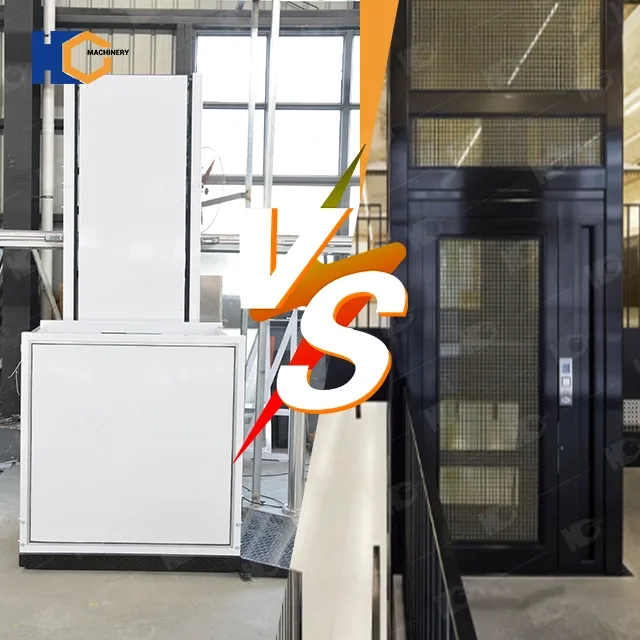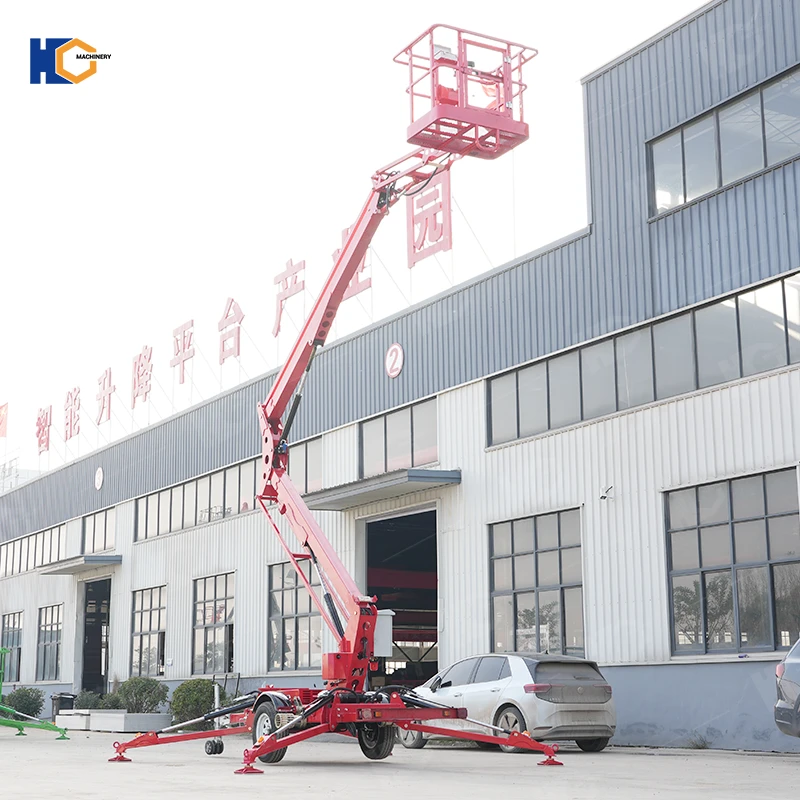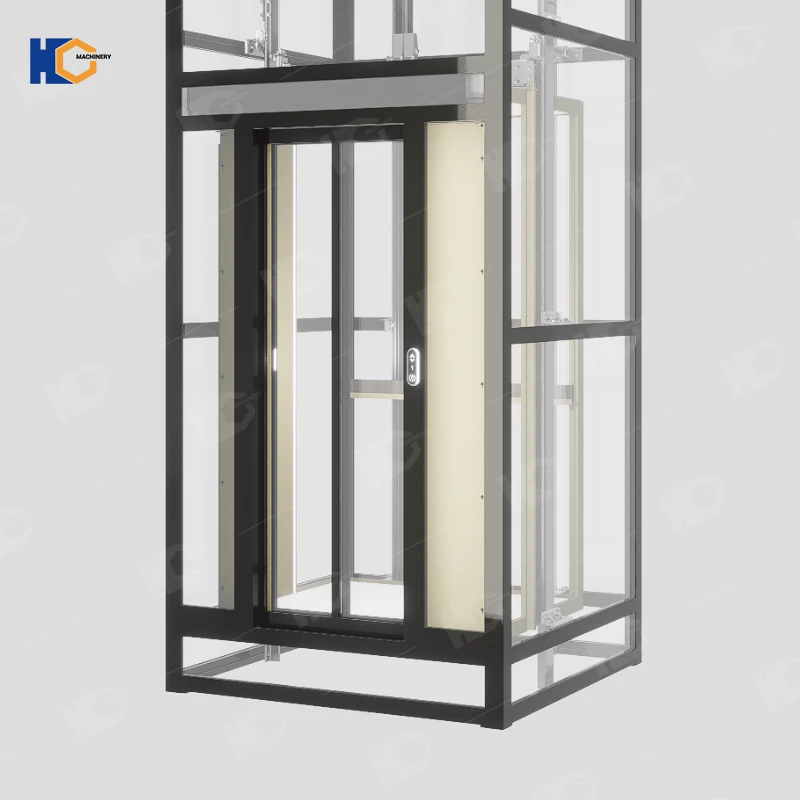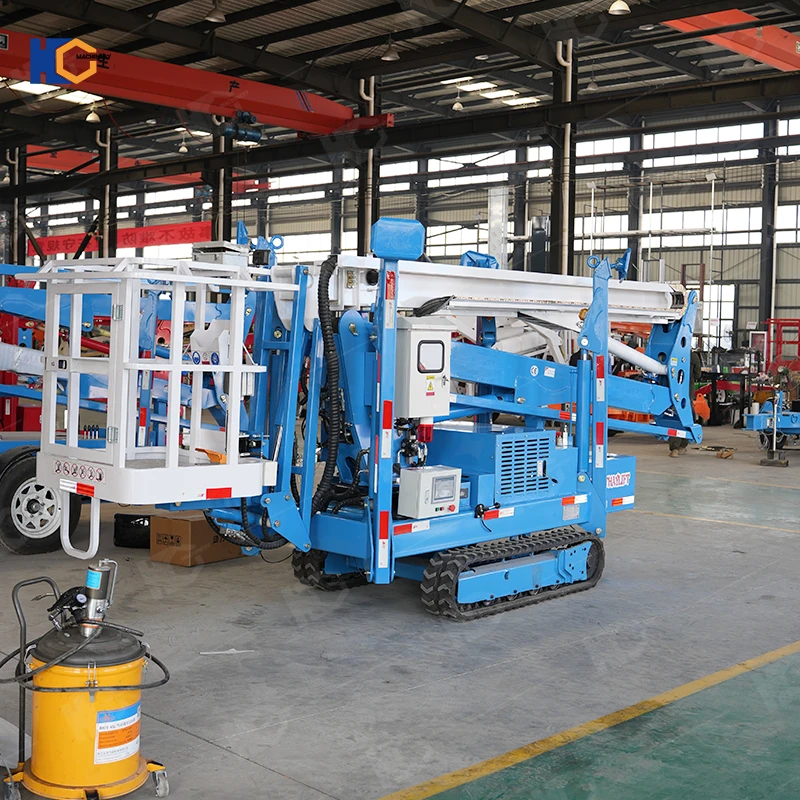Wheelchair lifts are essential accessibility devices designed to provide safe and convenient vertical transportation for individuals with mobility challenges. These mechanical platforms help users navigate elevation changes—whether in private homes, commercial buildings, or public spaces—ensuring independence and inclusivity. As populations age and accessibility regulations evolve, wheelchair lifts have become a critical solution for overcoming architectural barriers.
This article explores the key differences between home wheelchair lifts and ADA-compliant public lifts, helping readers make informed decisions based on their specific needs. Residential lifts prioritize comfort, customization, and affordability, while public lifts must meet stringent safety standards, durability requirements, and ADA accessibility guidelines. By comparing factors such as design, capacity, installation, cost, and legal compliance, we aim to clarify which type of lift is best suited for private use versus high-traffic environments.
Whether you're a homeowner seeking greater accessibility, a business owner ensuring ADA compliance, or a caregiver researching options, understanding these distinctions ensures the right investment in mobility solutions. Let’s examine how home and public wheelchair lifts differ—and why choosing the correct one matters for safety, convenience, and long-term usability.
Key Differences at a Glance
To help you quickly understand the distinctions between home wheelchair lifts and ADA-compliant public lifts, here’s a side-by-side comparison:
| Feature | Home Wheelchair Lifts | ADA-Compliant Public Lifts |
|---|---|---|
| Purpose | Personal use in private residences | High-traffic access in commercial/public spaces |
| Design | Compact, customizable for home aesthetics | Heavy-duty, standardized for durability and safety |
| Capacity | Typically 300-500 lbs | 500+ lbs (ADA-compliant standards) |
| Regulations | Fewer legal requirements (varies by region) | Must meet ADA standards for accessibility |
| Cost | Lower upfront cost ($2,000-$15,000) | Higher ($15,000-$50,000+ due to compliance) |
| Installation | Simpler, often modular for home use | Complex, may require structural modifications |
| Maintenance | Less frequent (light to moderate use) | Regular inspections needed (heavy use) |
This table highlights why home lifts prioritize affordability and customization, while public lifts focus on durability, safety, and ADA compliance. The right choice depends on your specific needs—whether for private accessibility or public accommodation.
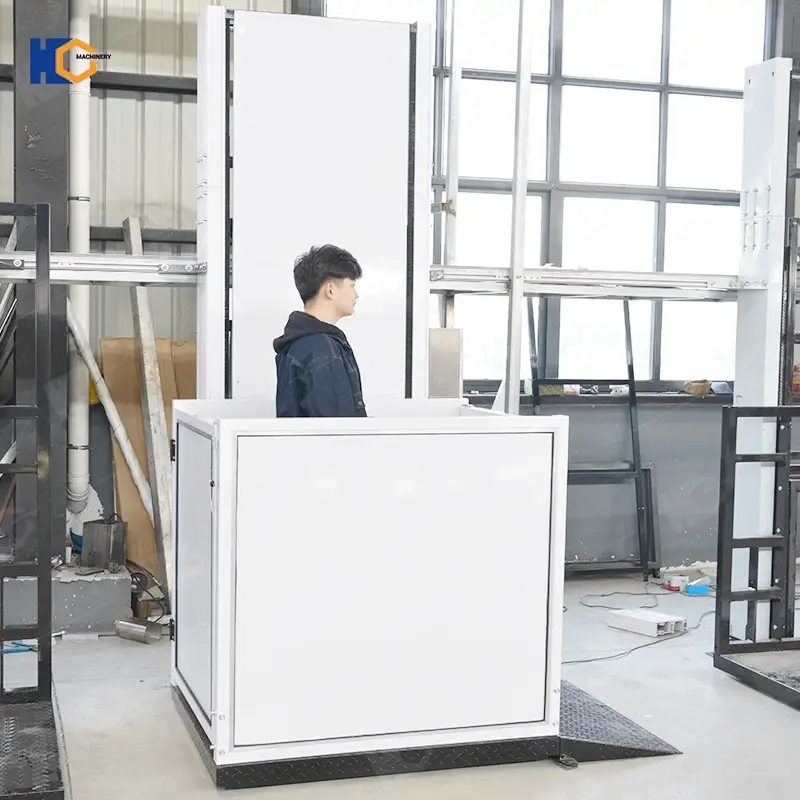
Home Wheelchair Lifts: Features & Considerations
Wheelchair lifts designed for residential use provide essential accessibility solutions for individuals with mobility challenges, allowing them to navigate different levels of their homes safely and independently. Unlike public lifts, which must meet strict commercial standards, home wheelchair lifts prioritize comfort, customization, and affordability. Below, we explore their typical uses, design features, capacity, regulations, costs, and key pros and cons to help you determine if a residential lift is the right choice.
1. Typical Uses of Home Wheelchair Lifts
Residential wheelchair lifts come in various configurations to suit different home layouts:
Stairlifts: Attached to staircases, allowing users to glide up and down stairs while seated.
Porch Lifts (Vertical Platform Lifts): Installed at entryways to help users overcome steps or elevated landings.
Wheelchair Elevators (Home Elevators): Enclosed lifts that move vertically between floors, ideal for multi-story homes.
Threshold Lifts: Small lifts designed to overcome single-step barriers, such as shower entries or sunken living rooms.
These lifts are ideal for private residences, including houses, apartments, and assisted living facilities where only a few individuals use them daily.
2. Design & Customization
Unlike commercial lifts, home wheelchair lifts are designed to blend seamlessly into residential spaces:
Compact Size: Fits in narrow stairwells or small entryways without major structural modifications.
Aesthetic Options: Available in different finishes (e.g., powder-coated colors, wood-grain seats) to match home décor.
Foldable or Retractable Models: Some stairlifts can fold away when not in use to free up space.
Indoor/Outdoor Options: Weather-resistant models are available for exterior use (e.g., porch lifts).
Because they are not subjected to heavy public use, residential lifts prioritize comfort and convenience over industrial durability.
3. Weight Capacity & Safety Features
Home lifts typically have lower weight limits compared to public lifts:
Standard Capacity: Most support 300–500 lbs, though heavy-duty models may reach 600 lbs.
Safety Features:
Seatbelts and swivel seats for secure transfers.
Obstruction sensors to prevent accidents.
Battery backups in case of power outages.
While sufficient for personal use, they are not built for constant, heavy-duty operation like public lifts.
4. Regulations & Legal Requirements
Unlike ADA-compliant public lifts, residential wheelchair lifts have fewer legal restrictions:
No ADA Compliance Needed: Since they are for private use, they don’t require commercial accessibility standards.
Local Building Codes May Apply: Some regions require permits for installation, especially for vertical platform lifts.
Manufacturer Safety Standards: Must meet general safety certifications (e.g., ANSI, UL).
This makes installation faster and less expensive than public lifts.
5. Cost & Installation Factors
The price of a home wheelchair lift varies based on type, complexity, and customization:
| Lift Type | Average Cost Range | Installation Complexity |
|---|---|---|
| Straight Stairlift | $2,000 – $5,000 | Low (modular installation) |
| Curved Stairlift | $6,000 – $15,000 | Moderate (custom rail fitting) |
| Vertical Platform Lift | $5,000 – $20,000 | High (may need structural changes) |
| Wheelchair Elevator | $15,000 – $30,000+ | Very High (requires shaft) |
Additional Costs May Include:
Electrical wiring upgrades.
Home modifications (e.g., widening doorways).
Maintenance contracts (recommended for long-term reliability).
6. Pros & Cons of Home Wheelchair Lifts
✔ Pros:
✅ Affordable – Lower upfront cost than commercial lifts.
✅ Customizable – Adaptable to home layouts and aesthetics.
✅ Easier Installation – Minimal structural changes required.
✅ Privacy & Convenience – Designed for personal use.
✖ Cons:
❌ Lower Weight Limits – Not suitable for bariatric users or heavy equipment.
❌ Less Durable – Not built for high-frequency public use.
❌ Limited Compliance – Cannot be used in commercial settings.
❌ Maintenance Needs – Requires periodic servicing (though less than public lifts).
Is a Home Wheelchair Lift Right for You?
Home wheelchair lifts are an excellent solution for individuals and families needing accessible mobility within their private residences. They offer cost-effective, customizable, and convenient alternatives to commercial lifts but are not designed for heavy public use.
Best for:
Seniors aging in place.
Individuals with temporary or permanent mobility limitations.
Homes with stairs or elevated entryways.
If you need a lift for a business or public space, an ADA-compliant commercial lift would be more suitable.

ADA-Compliant Public Wheelchair Lifts: Features & Considerations
Public wheelchair lifts play a crucial role in ensuring accessibility for individuals with mobility challenges in high-traffic environments. Unlike residential lifts, ADA-compliant public wheelchair lifts must meet strict safety, durability, and accessibility standards to accommodate diverse users in commercial and institutional settings. This section explores their typical applications, design specifications, weight capacities, regulatory requirements, cost factors, and key advantages versus limitations.
1. Typical Uses of ADA-Compliant Public Lifts
These lifts are installed in spaces where accessibility is legally mandated and where heavy usage is expected:
Government Buildings (courthouses, city halls)
Healthcare Facilities (hospitals, rehabilitation centers)
Educational Institutions (schools, universities)
Transit Hubs (bus stations, train platforms)
Commercial Spaces (shopping malls, hotels, offices)
Recreational Venues (theaters, stadiums, museums)
Public lifts ensure compliance with the Americans with Disabilities Act (ADA), guaranteeing equal access for wheelchair users and individuals with limited mobility.
2. Design & Durability Features
Unlike residential lifts, ADA-compliant models are built to withstand constant daily use and harsh environments:
Heavy-Duty Construction: Made from industrial-grade steel or aluminum for long-term durability.
Weather-Resistant Models: Outdoor lifts feature corrosion-resistant materials for all climates.
Standardized Platform Sizes: Minimum 36" x 48" platform to accommodate wheelchairs and attendants.
Non-Slip Surfaces: Textured flooring for safety in wet or high-traffic conditions.
Emergency Features: Backup power, manual lowering mechanisms, and alarm systems.
These lifts prioritize functionality and safety over aesthetics, as they must serve a wide range of users.
3. Weight Capacity & Safety Standards
Public wheelchair lifts support higher weight limits and stricter safety protocols:
Standard Capacity: 500–750 lbs (some heavy-duty models exceed 1,000 lbs).
Safety Mechanisms:
Automatic sensors to detect obstructions.
Handrails & guardrails for stability.
Emergency stop buttons and fail-safe brakes.
Battery backups to ensure operation during power outages.
These features ensure reliability in high-traffic public settings, where malfunctions could pose serious risks.
4. ADA Compliance & Legal Requirements
All public wheelchair lifts must adhere to ADA accessibility guidelines, including:
Minimum Platform Size: 36" x 48" (to accommodate wheelchairs).
Door Width: At least 32" clear opening for wheelchair access.
Operational Controls: Must be reachable from a seated position (max 48" height).
Slope & Speed Restrictions: Maximum 1:12 slope for inclined lifts.
Emergency Protocols: Backup power and manual operation options.
Non-compliance can result in legal penalties, fines, or lawsuits, making proper installation and certification essential.
5. Cost & Installation Factors
Due to their heavy-duty construction and regulatory requirements, ADA-compliant lifts are significantly more expensive than residential models:
| Lift Type | Average Cost Range | Installation Complexity |
|---|---|---|
| Vertical Platform Lift | $15,000 – $40,000 | High (structural modifications often needed) |
| Inclined Platform Lift | $20,000 – $50,000 | Very High (requires reinforced support) |
| Wheelchair Elevator | $30,000 – $100,000+ | Extreme (shaft construction, electrical upgrades) |
Additional Costs May Include:
ADA compliance inspections & certifications.
Reinforced flooring or structural reinforcements.
Ongoing maintenance contracts (required for commercial use).
6. Pros & Cons of ADA-Compliant Public Lifts
✔ Advantages:
✅ Universal Accessibility – Meets legal requirements for public spaces.
✅ High Weight Capacity – Supports bariatric users and motorized wheelchairs.
✅ Extreme Durability – Built to withstand constant daily use.
✅ Safety Assurance – Emergency features reduce liability risks.
✖ Disadvantages:
❌ High Initial Cost – 3–5x more expensive than residential lifts.
❌ Complex Installation – Often requires construction modifications.
❌ Ongoing Maintenance – Regular inspections and servicing needed.
❌ Limited Customization – Designed for function over aesthetics.
Conclusion: Are ADA-Compliant Lifts Necessary for Your Space?
ADA-compliant wheelchair lifts are essential for any business or public facility required to provide accessible entry. While they involve higher costs and stricter regulations, they ensure compliance, reduce legal risks, and promote inclusivity.
Best For:
Businesses needing ADA compliance.
High-traffic facilities (hospitals, schools, transit stations).
Public venues requiring reliable, long-term accessibility solutions.
If you need a lift for private home use, a residential wheelchair lift will be more cost-effective and easier to install.
Need help selecting the right ADA-compliant lift? Consult an accessibility specialist to ensure proper installation and certification.
Critical Factors to Choose the Right Wheelchair Lift
Selecting between a home wheelchair lift and an ADA-compliant public lift requires careful consideration of four key factors:
1. Usage Frequency
Home Lifts: Designed for light to moderate daily use (typically 5-10 cycles per day) by a single household
Public Lifts: Engineered for constant operation (50+ daily cycles) in high-traffic environments
Consider: A residential lift in a commercial setting would wear out quickly, while a commercial lift at home would be unnecessarily expensive
2. Budget Considerations
Upfront Costs:
Home lifts: $2,000-$20,000
Public lifts: $15,000-$100,000+
Long-Term Costs:
Residential models: $200-$500 annual maintenance
Commercial models: $1,000-$3,000+ annual service contracts
Rule: Public lifts require 3-5% of initial cost yearly for proper maintenance
3. Space Requirements
Home Installations:
Typically fit existing stairwells or small footprints
May require minor modifications (e.g., handrail removal)
Commercial Installations:
Often need structural reinforcements
Require larger clear floor spaces (minimum 36"x48" platform)
May necessitate construction permits
4. Legal Compliance
Residential: Generally only subject to local building codes
Public Spaces: Must meet strict ADA requirements including:
Minimum platform dimensions
Operational height restrictions
Emergency backup systems
Annual inspections in many jurisdictions
Decision Tip: Always consult with an accessibility specialist when installing public lifts to ensure full compliance and avoid costly violations.
The right choice balances these factors with your specific needs - whether prioritizing affordability for home use or meeting mandatory accessibility standards in public spaces.
Conclusion: Choosing the Right Wheelchair Lift
When deciding between a home wheelchair lift and an ADA-compliant public lift, the key differences boil down to usage, cost, space, and legal requirements. Home lifts offer affordability and customization for personal use, while public lifts provide durability, higher capacity, and ADA compliance for commercial spaces.
Before making a decision:
✔ Assess your needs – Will the lift serve one household or high-traffic public access?
✔ Compare costs – Factor in both upfront expenses and long-term maintenance.
✔ Verify regulations – Public spaces must meet strict accessibility laws.
FAQ: Home vs. Public Wheelchair Lifts
1. Can a home wheelchair lift be used in a public building?
No. Residential lifts are not built to meet ADA compliance standards for public spaces, which require higher weight limits, durability, and safety features. Using a home lift commercially may violate accessibility laws.
2. How much does an ADA-compliant public lift cost compared to a home lift?
Public lifts typically cost 3-5 times more ($15,000–$100,000+) due to heavy-duty construction and compliance requirements, while home lifts range from $2,000–$20,000.
3. Do home wheelchair lifts require building permits?
Sometimes. Vertical platform lifts may need permits, while stairlifts usually don’t. Check local codes. Public lifts always require permits and inspections.
4. What’s the lifespan of a public vs. home wheelchair lift?
Home lifts: 5–10 years (moderate use).
Public lifts: 10–20+ years (with proper maintenance).
5. Can I install a public wheelchair lift at home?
Yes, but it’s overkill unless you need bariatric capacity (500+ lbs). Home lifts are more cost-effective for private use.
6. Are public wheelchair lifts harder to maintain?
Yes. They require professional servicing every 3–6 months due to heavy use, while home lifts may only need annual checkups.
7. Do ADA lifts work during power outages?
Yes. They include battery backups, unlike many home lifts (unless specified).
8. Which type has faster installation?
Home lifts (1–3 days) vs. public lifts (weeks–months), which often require construction modifications.
Case Studies: Real-World Examples of Home vs. Public Lift Installations
1. Residential Retrofit: A Two-Story Home in Florida
Challenge: A retired couple needed wheelchair access to their second-floor bedroom after one spouse developed mobility issues.
Solution: A curved stairlift ($12,500) was installed along their L-shaped staircase, featuring a powered swivel seat for safe transfers.
Outcome: The lift allowed independent home access without costly structural changes. Five years later, it remains in daily use with only minor maintenance.
2. Small Business Compliance: A Café in California
Challenge: A historic building’s entrance had three steps, violating ADA requirements for customer access.
Solution: An outdoor vertical platform lift ($28,000) was installed with weatherproofing and ADA-compliant controls.
Outcome: The business met legal standards and saw increased patronage from wheelchair users. Annual inspections ensure continued compliance.
3. Public Transit Upgrade: A Bus Terminal in Chicago
Challenge: A metro station’s aging ramp system couldn’t accommodate rising passenger numbers.
Solution: Two heavy-duty inclined platform lifts ($75,000 each) were added to high-traffic boarding areas.
Outcome: The lifts handle 200+ daily users and reduced liability risks. Maintenance contracts keep them operational year-round.
Need expert guidance? Consult an accessibility specialist to ensure you select the right lift for safety, compliance, and long-term reliability. Request a quote today to explore the best options for your home or business!
